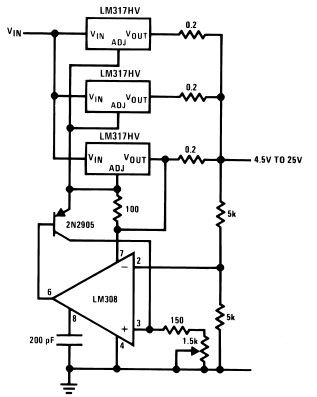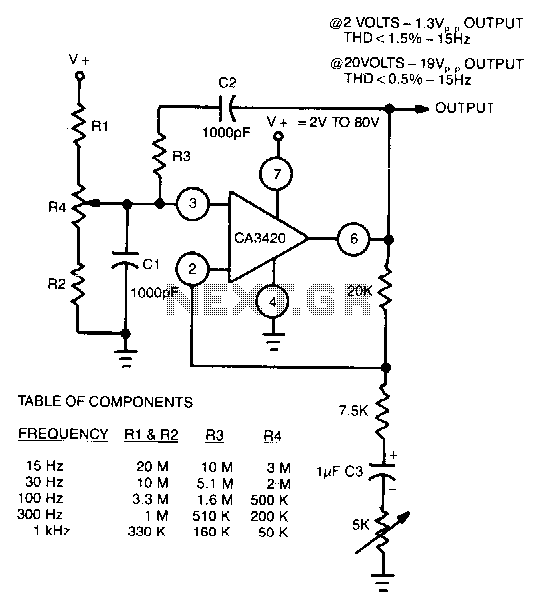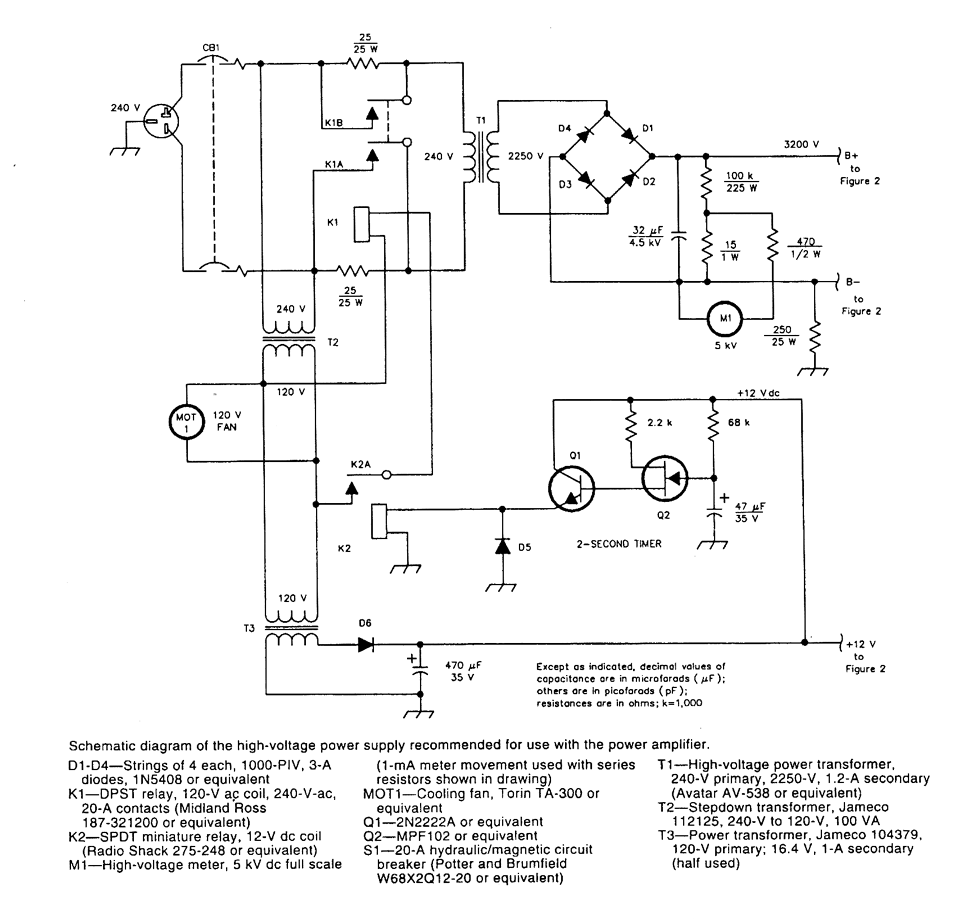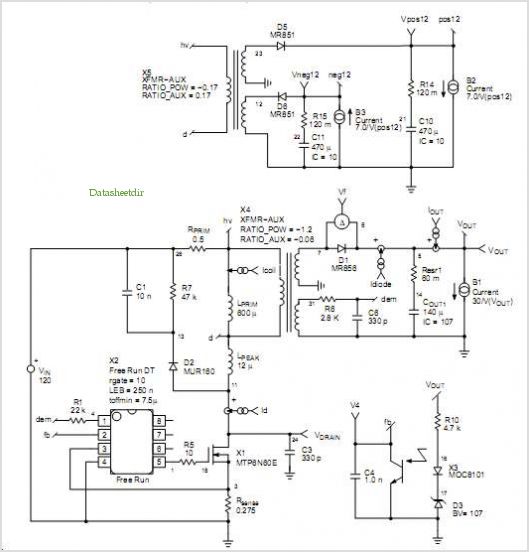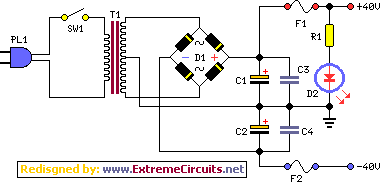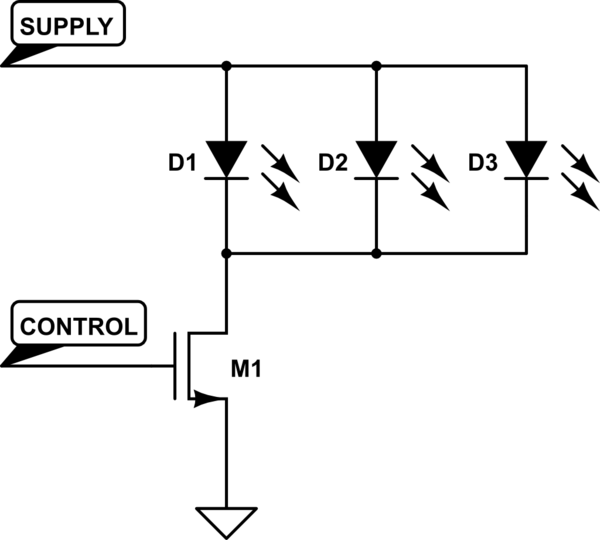
power supply NMOS FET selection for reverse polarity protection
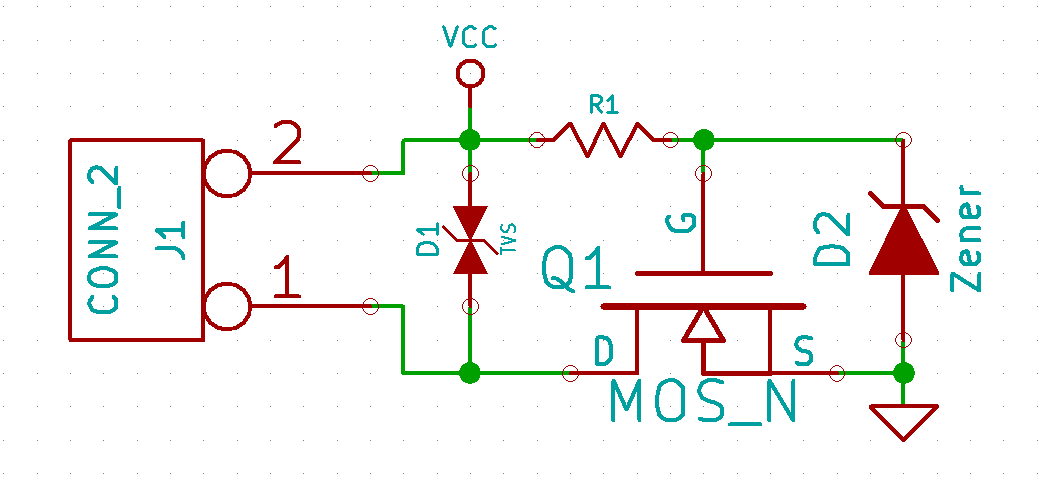
A reverse polarity protection circuit is presented, similar to the one depicted in Figure 2 of SLVA139: Reverse Current/Battery Protection Circuits. The circuit in question is slightly more complex due to the potential input voltage range of 5-40V. Most MOSFETs have a maximum gate-source voltage (VGS) of 20V, necessitating the use of a Zener clamp on the gate or a very large and expensive FET. The maximum input current is expected to be around 6A. The important characteristics of the FET in this configuration include ensuring that the drain-source breakdown voltage (BVDSS) is sufficiently high to manage the full input voltage during reverse polarity. It is also crucial to minimize the RDS(on) to avoid introducing significant impedance in the ground circuit. According to Fairchild AN-9010: MOSFET Basics, when the drain-to-source voltage is zero, the drain current is also zero regardless of the gate-to-source voltage. This condition falls within the Ohmic region where VGS > VGS(th) and VDS is greater than zero. However, operating under the assumption of VDS = 0 may be risky in a noisy environment, such as near various motors, as voltage offsets between the input supply ground and local ground could lead to unintended current flow. It is uncertain whether specifying the maximum load current for the drain current (ID) is necessary, which would imply minimal power dissipation. A potential solution could involve Zener clamping VGS closer to VGS(th) to limit drain current and voltage.
The reverse polarity protection circuit is designed to safeguard sensitive electronic components from damage caused by incorrect power supply connections. In this specific design, the circuit must accommodate a broad input voltage range of 5-40V, which presents challenges in selecting appropriate MOSFETs. The gate-source voltage (VGS) limitation of common MOSFETs, typically capped at 20V, necessitates the implementation of a Zener diode clamp to restrict the gate voltage within safe operational limits. This ensures that the MOSFET can be driven adequately without exceeding its maximum ratings.
The maximum anticipated input current of 6A necessitates careful consideration of the FET's characteristics. The drain-source breakdown voltage (BVDSS) must be selected to exceed the maximum input voltage to prevent breakdown during reverse polarity conditions. Additionally, minimizing the on-resistance (RDS(on)) is essential to maintain efficiency and reduce heating in the circuit, especially in high-current applications.
The operational characteristics of the MOSFET in the Ohmic region are critical to the circuit's performance. When the drain-to-source voltage (VDS) is minimal, the drain current (ID) is also expected to be low, which can reduce power dissipation. However, in environments with potential electrical noise, such as those with motors, voltage offsets between different grounds can introduce complications. These offsets may inadvertently allow current to flow even when the intended state is off.
To mitigate these risks, the design can incorporate a Zener diode to clamp VGS closer to the threshold voltage (VGS(th)). This approach helps to limit the drain current and voltage under various operational conditions, thereby enhancing the reliability and safety of the reverse polarity protection circuit. Overall, careful selection of components and thoughtful circuit design are paramount to achieving effective reverse polarity protection in this application.A reverse polarity protection circuit, similar to that in Figure 2 of SLVA139: Reverse Current/Battery Protection Circuits. Here is my circuit: My case is slightly more complex due to the possible input voltage ranging from 5-40V.
Most MOSFETs seem to have a maximum gate-source voltage VGS of 20V, so I need the Zener clamp on thegate (or a very large/expensive FET). The maximum input current will be about 6A. What I`m wondering is, what FET characteristics actually matter in this configuration I know that I definitely want a drain-source breakdown voltage BVDSS high enough to handle the full input voltage in the reverse polarity condition. I`m also pretty sure I want to minimize RDS(on) as to not introduce any impedance in the ground circuit.
Fairchild AN-9010: MOSFET Basics has this to say about operation in the Ohmic region: "If the drain-to-source voltage is zero, the drain current also becomes zero regardless of gate to-source voltage. This region is at the left side of the VGS VGS(th)= VDS boundary line (VGS VGS(th) > VDS > 0). Even if the drain current is very large, in this region the power dissipation is maintained by minimizing VDS(on).
" Does this configuration fall under the VDS = 0 classification That seems like a somewhat dangerous assumption to make in a noisy environment (this will be operating in the vicinity of various types of motors), as any voltage offsets between input supply ground and local ground could cause current to flow. Even with that possibility, I`m not sure I need to spec for my maximum load current on the drain current ID.
It would then follow that I don`t need to dissipate very much power either. I suppose I could mitigate the problem by Zener clamping VGS closer to VGS(th) to reduce drain current/voltage 🔗 External reference
The reverse polarity protection circuit is designed to safeguard sensitive electronic components from damage caused by incorrect power supply connections. In this specific design, the circuit must accommodate a broad input voltage range of 5-40V, which presents challenges in selecting appropriate MOSFETs. The gate-source voltage (VGS) limitation of common MOSFETs, typically capped at 20V, necessitates the implementation of a Zener diode clamp to restrict the gate voltage within safe operational limits. This ensures that the MOSFET can be driven adequately without exceeding its maximum ratings.
The maximum anticipated input current of 6A necessitates careful consideration of the FET's characteristics. The drain-source breakdown voltage (BVDSS) must be selected to exceed the maximum input voltage to prevent breakdown during reverse polarity conditions. Additionally, minimizing the on-resistance (RDS(on)) is essential to maintain efficiency and reduce heating in the circuit, especially in high-current applications.
The operational characteristics of the MOSFET in the Ohmic region are critical to the circuit's performance. When the drain-to-source voltage (VDS) is minimal, the drain current (ID) is also expected to be low, which can reduce power dissipation. However, in environments with potential electrical noise, such as those with motors, voltage offsets between different grounds can introduce complications. These offsets may inadvertently allow current to flow even when the intended state is off.
To mitigate these risks, the design can incorporate a Zener diode to clamp VGS closer to the threshold voltage (VGS(th)). This approach helps to limit the drain current and voltage under various operational conditions, thereby enhancing the reliability and safety of the reverse polarity protection circuit. Overall, careful selection of components and thoughtful circuit design are paramount to achieving effective reverse polarity protection in this application.A reverse polarity protection circuit, similar to that in Figure 2 of SLVA139: Reverse Current/Battery Protection Circuits. Here is my circuit: My case is slightly more complex due to the possible input voltage ranging from 5-40V.
Most MOSFETs seem to have a maximum gate-source voltage VGS of 20V, so I need the Zener clamp on thegate (or a very large/expensive FET). The maximum input current will be about 6A. What I`m wondering is, what FET characteristics actually matter in this configuration I know that I definitely want a drain-source breakdown voltage BVDSS high enough to handle the full input voltage in the reverse polarity condition. I`m also pretty sure I want to minimize RDS(on) as to not introduce any impedance in the ground circuit.
Fairchild AN-9010: MOSFET Basics has this to say about operation in the Ohmic region: "If the drain-to-source voltage is zero, the drain current also becomes zero regardless of gate to-source voltage. This region is at the left side of the VGS VGS(th)= VDS boundary line (VGS VGS(th) > VDS > 0). Even if the drain current is very large, in this region the power dissipation is maintained by minimizing VDS(on).
" Does this configuration fall under the VDS = 0 classification That seems like a somewhat dangerous assumption to make in a noisy environment (this will be operating in the vicinity of various types of motors), as any voltage offsets between input supply ground and local ground could cause current to flow. Even with that possibility, I`m not sure I need to spec for my maximum load current on the drain current ID.
It would then follow that I don`t need to dissipate very much power either. I suppose I could mitigate the problem by Zener clamping VGS closer to VGS(th) to reduce drain current/voltage 🔗 External reference
